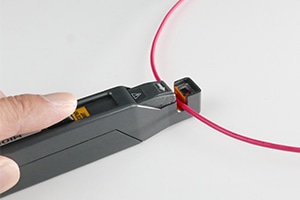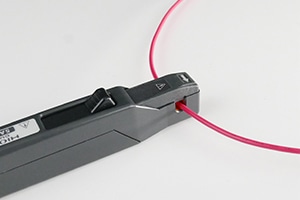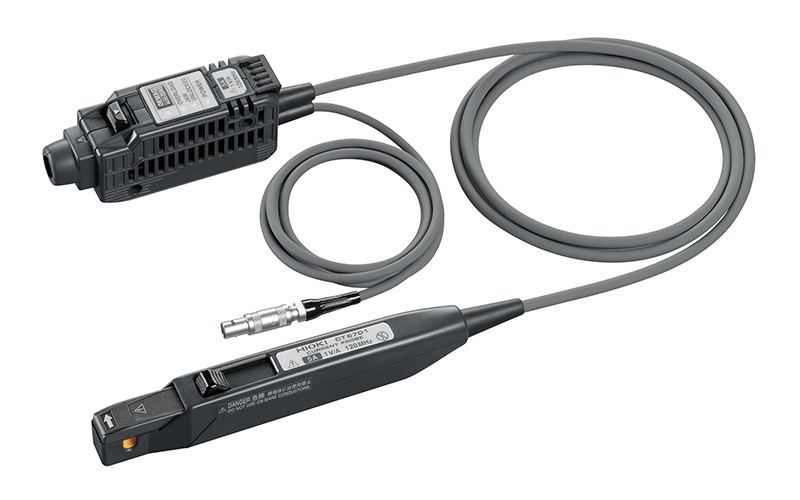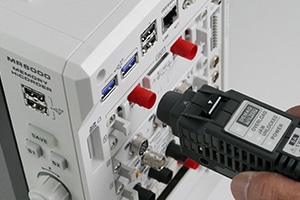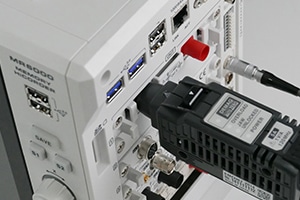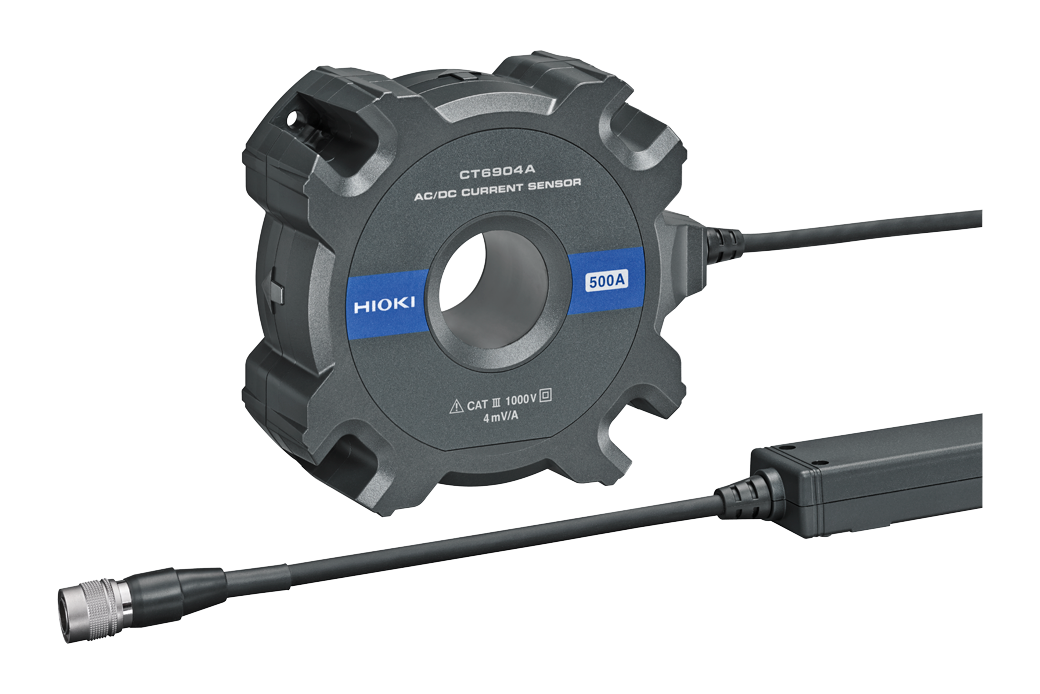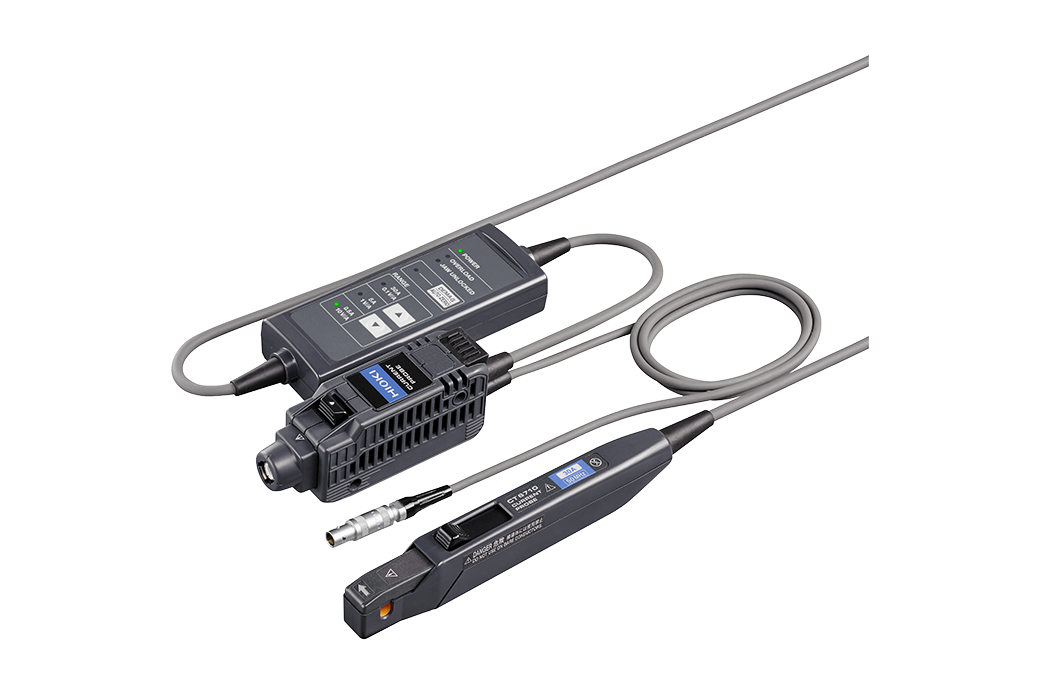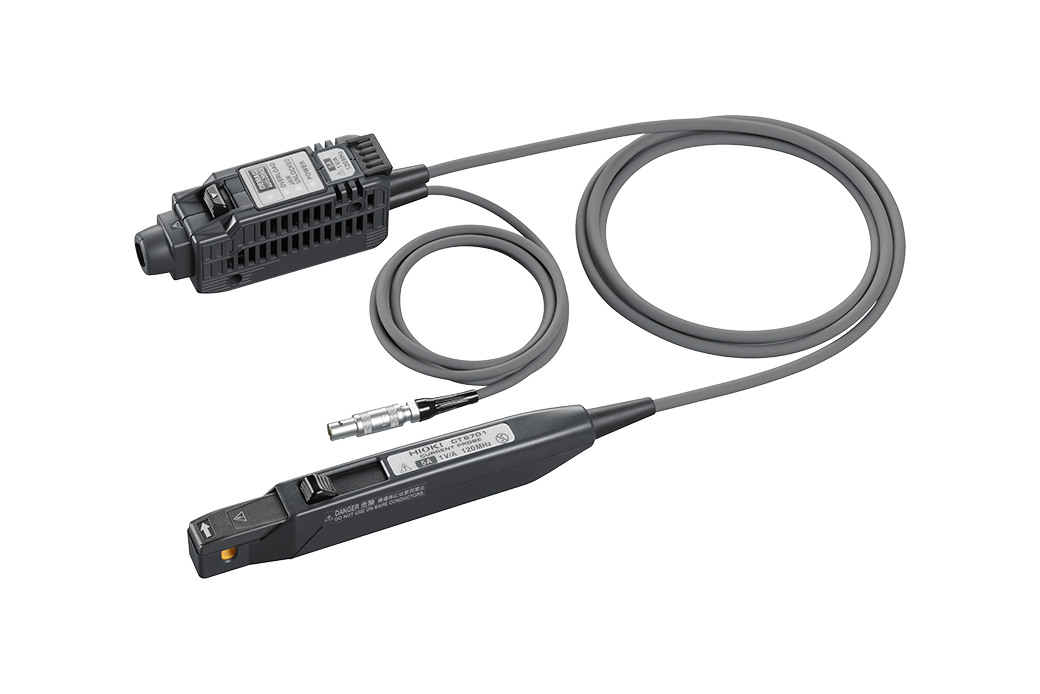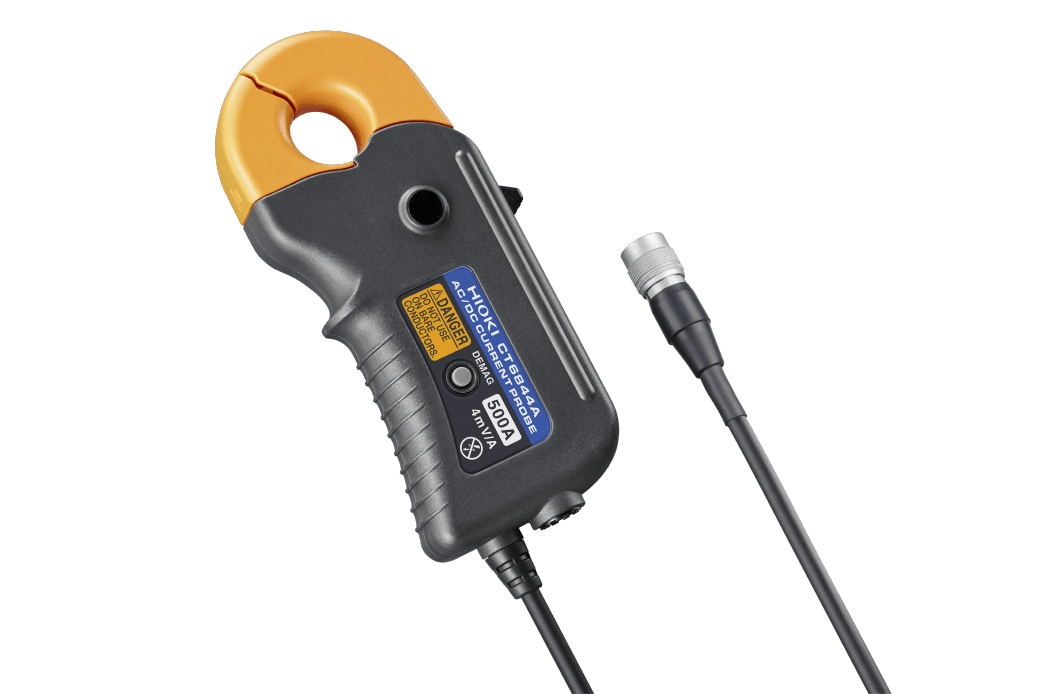How to Use Current Probes
Learn more about how to use current probes. Review of basic methods and precautions
Overview
Since the properties of electricity are invisible, it’s impossible to immediately determine the nature of problems when they occur. In some cases, it becomes necessary to measure current, for example in day-to-day maintenance programs geared to keep problems from occurring in the first place, and in efforts to pinpoint the cause when problems do occur. Current can be measured with a variety of tools, including digital multimeters, clamp meters, and current probes.
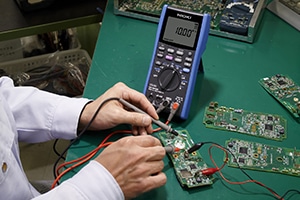 Digital Multimeter
Digital Multimeter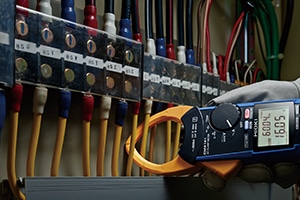 AC Clamp Meter
AC Clamp Meter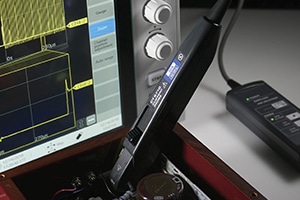 Current Probe
Current Probe
This page offers an easy-to-understand introduction to topics such as basic methods for using current probes and associated precautions.
Basics of current measurement
Current measurement is one of the most fundamental techniques for measuring electronic devices, and it’s used in many situations. Examples include not only quality checks during product development, but also maintenance work intended to check the status of operating electronic devices and confirmation of whether current is flowing when electronic devices malfunction or fail.
A variety of devices are used to measure current. Principal instruments that can measure current include the following:
- Digital multimeters
- Clamp meters
- Current probes (viewing current probe voltage output voltage with an oscilloscope)
Digital multimeters offer an accessible way to measure not only current, but also properties such as voltage and resistance. A variety of types are available, ranging from large, benchtop units to portable card-style models.
Many people already have a good understanding of how to use a digital multimeter. However, fewer have a sufficient understanding of current probes and other tools.
Current probes: Measuring current in the field without turning off the power
Current probes can be used with oscilloscopes to provide optional measurement functionality. They are most distinguished by the fact that they can measure current without requiring that the circuit be shut off. With most multimeters, the circuit must be shut off so that the instrument can be placed in series with the circuit in order to measure it.
However, since current probes don’t require the circuit to be disconnected, they're capable of more accurate measurement than digital multimeters while minimizing effects on the circuit. That said, you may wonder why current probes can measure current simply by being affixed to a wire.
The reason is that they utilize various methods to detect the magnetic field that occurs around the current being measured.
The details of those methods lie outside the scope of this article, but suffice to say that current probes are available in a variety of models, including some designed to measure AC current alone and others that can measure both AC and DC current. There are also high-sensitivity models that can be connected to an oscilloscope in order to observe current waveforms.
How to use a current probe
It’s not particularly difficult to use a current probe. Current probes are used by connecting them to an oscilloscope. This process can be quite simple, as it is when connecting current probes to Hioki Memory HiCorders, which have one-touch BNC connectors.
Some models have functionality that makes measurement more efficient, for example automatic zero adjustment and demagnetization (which can be performed by pressing and holding a button).
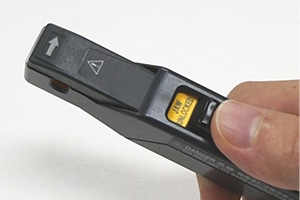 Close
Close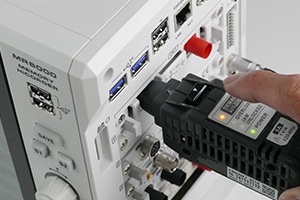 Automatic Zero-Adjustment and Demagnetization in One Button
Automatic Zero-Adjustment and Demagnetization in One Button
Current probes designed for use with oscilloscopes include AC/DC zero flux method current sensors, which use a Hall element to detect current. When the CT method is combined with a Hall element, both DC and AC current can be measured.
In addition to being able to measure both DC and AC current, this type of current probe provides excellent linearity without being affected by the B-H magnetic characteristics of a magnetic core. It also delivers a broad frequency band with high S/N performance. Furthermore, the absence of excitation current noise means overall noise during measurement is very low.
Precautions when using a current probe
Some current probes are designed to measure circuits carrying large currents, while others can measure extremely small currents with a high degree of precision. It’s common for the waveforms of excessively small currents to be obscured by noise. In such cases, try looping the circuit cable being measured around the measurement core several times. The magnitude of the displayed waveform will increase in proportion to the number of loops, offering a way to measure such currents more reliably.
In addition to current probes, Hioki offers a line of current sensors and other products.
For example, clamps for measuring AC current can be divided into “clamp-on probes”, “current probes” which are designed to observe waveforms, and “clamp-on sensors, AC/DC current sensors”, which are designed to observe levels.
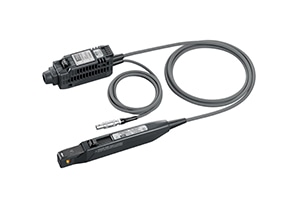 Current Probe
Current Probe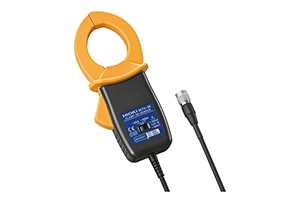 Clamp on Sensor
Clamp on Sensor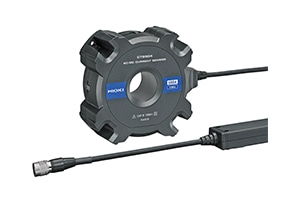 AC/DC Current Sensor
AC/DC Current Sensor
Instruments designed to observe waveforms are distinguished by their broad frequency band. Since both probes and sensors have amplitude and phase accuracy figures that are defined by frequency band, it’s important to define your measurement application so that you can choose the right product.
Using current probes to measure current after carefully reviewing precautions
Instruments such as digital multimeters, clamp meters, and current probes are used to measure current. Current probes, which can be used with oscilloscopes to provide optional measurement functionality, can measure DC and AC current.
Since current probes can measure current without requiring the circuit to be disconnected, they're capable of accurate measurement while minimizing effects on the circuit. Why not try measuring current after identifying the right current probe for your application based on this article’s introduction of how to use current probes and associated precautions?
Applications
- Current Consumption Measurement for Low Energy Devices
- Evaluating High-Speed Switching Devices
- Automotive Electrical Equipment and ECU Current Measurement

